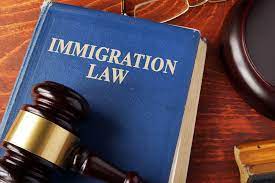Using an intersectionality approach, researchers recognize that individuals experience multiple and intersecting social categories differently. For example, some people may feel at home in their local LGBTQ community but not in their ethnic or religious communities.
Such intersectionality can be exacerbated by racist and xenophobic immigration policies, which impact immigrant communities with specific vulnerabilities.
Undocumented Immigrants
Many LGBTQ people leave their home countries to escape violence, persecution, or poverty. Many of these individuals come to the United States through a legal avenue like employment, family reunification, or humanitarian protection (like asylum). They can often face additional stress and discrimination in healthcare settings and within their communities because of their intersectional identities as immigrants and members of the LGBTQ community.
Intersectionality requires that advocates address the unique obstacles and stereotypes that impact a specific group of individuals. For example, a person of colour navigating abortion restrictions will have different experiences than a white woman navigating those same restrictions.
Immigration Law and LGBTQ advocates are taking an intersectional approach by bringing together LGBTQ and immigrant communities.
Refugees
Many refugees come from countries facing war, persecution, or other severe threats to their safety and well-being. They have the right to international protection. Refugees can include people fleeing persecution based on their sexual orientation or gender identity, those seeking asylum, and the relatives of refugees.
But their legal status alone does not capture who they are as human beings. They might be teachers, doctors, lawyers, artists, or passionate football fans. They might be mothers, daughters, sisters, and fathers.
Inter- and intra-movement coalitions combining LGBTQ and immigrant rights groups have formed around local issues, and they can lead to powerful rights campaign “wins.” However, using an intersectional lens is essential to ensure their goals do not exclude a large section of the movement or marginalize a group.
HIV+ Immigrants
As advocates work toward systemic change, they should include all people. This requires a holistic approach that considers multiple layers of oppression and discrimination, ranging from sexual orientation to gender identity, race, immigration status, and more.
For example, a study found that the structural stigma that LGBTQ migrants face in their home countries and receiving countries influences HIV prevention. Specifically, migrants living in anti-gay and anti-immigrant receiving countries had lower odds of HIV testing due to fear of disclosure or lack of access to services.
To overcome these barriers, advocates should partner with immigrant and LGBT organizations to provide outreach and education. They should also support campaigns to protect immigrants’ privacy while providing access to LGBT services. Additionally, they should strive to have staff and volunteers who speak the languages of the communities they serve. This can help ensure that LGBTQ people, especially those with limited English proficiency, are not mistreated by healthcare providers and have better access to HIV-related resources.
Same-Sex Couples
Using data from the American Community Survey (ACS), this technical appendix examines demographic information about households where an adult describes their relationship with another adult as a same-sex partner or spouse. This includes partners or spouses in marriage, civil unions, domestic partnerships, and unmarried couples.
Same-sex relationships vary widely and may be formally or informally recognized by law. Those who marry may have legal benefits, including access to social security, medical care, and inheritance.
Gay and lesbian couples have long sought stable, loving relationships. However, many couples face stigma, discrimination, and barriers to a healthy and fulfilling relationship. In addition, same-sex couples may face barriers to accessing resources for their health and economic well-being. This is especially true of immigrant LGBT individuals. This is because, unlike other Americans, immigrants are more likely to experience stigma, discrimination, and barriers to health care than their non-immigrant LGBTQ counterparts.




